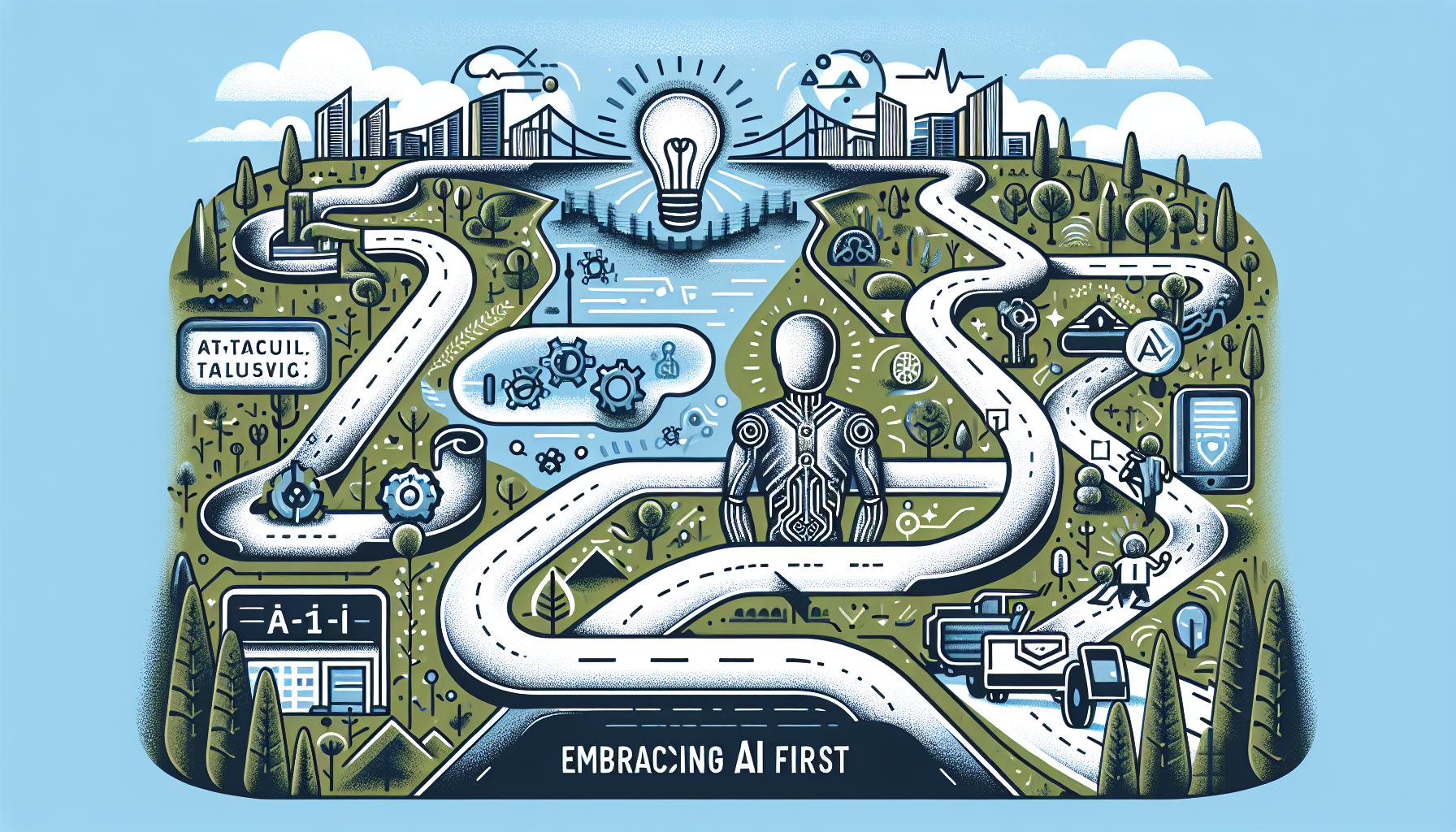Understanding AI-First Digital Transformation
In today’s fast-paced digital landscape, businesses are adopting an AI-first approach to optimize their operations, enhance customer experiences, and maintain competitive advantages. Embracing AI-first involves integrating artificial intelligence deeply into the organizational culture and operational processes, thereby setting the foundation for a comprehensive digital transformation. To attain success in this endeavor, crafting a robust digital transformation roadmap is imperative.
The AI-First Mindset
Adopting an AI-first mindset begins with recognizing the transformative potential of AI technologies. Organizations must cultivate a culture that encourages experimentation, innovation, and data-driven decision-making. Employees should be educated on the benefits and applications of AI, fostering an environment where teams can collaboratively explore AI-driven solutions tailored to their specific challenges.
Key Steps in Building a Digital Transformation Roadmap
1. Assessing Current Capabilities
Before embarking on a digital transformation journey, businesses should conduct a thorough assessment of their existing processes, technologies, and capabilities. This evaluation should not only include a review of current IT infrastructure but also an analysis of workflows, customer interactions, and employee engagement. The insights gathered will inform strategic decisions regarding AI technology integration.
2. Defining Clear Objectives
It is vital to define clear and measurable objectives that align with the overall business strategy. These objectives could include enhancing operational efficiency, improving customer engagement, or developing new products and services through AI innovations. Setting specific goals ensures that the transformation remains focused and measurable.
3. Identifying Use Cases
Identifying practical use cases is a critical step in the digital transformation roadmap. Businesses should prioritize areas where AI can deliver the most significant impact. Common use cases include:
- Customer Service Automation: Implementing AI-powered chatbots to handle customer queries efficiently.
- Predictive Analytics: Utilizing AI for forecasting trends in market behavior, allowing for proactive decision-making.
- Personalization: Deploying AI algorithms to provide tailored experiences to customers, enhancing satisfaction and loyalty.
By focusing on specific use cases, organizations can avoid overwhelming complexity and maintain momentum in their transformation efforts.
Infrastructure and Technological Requirements
4. Investing in Data Management
AI thrives on data, making effective data management essential. Organizations need systems that ensure data quality, accessibility, and security. Implementing a robust data strategy entails collecting, storing, and processing data in a manner conducive to AI applications, as well as ensuring compliance with regulations.
5. Selecting the Right Tools and Technologies
Choosing the right AI tools is crucial for a successful digital transformation. Various AI platforms, including cloud-based solutions, machine learning libraries, and data analytics tools, should be evaluated for their potential to meet the defined objectives. Flexibility, scalability, and ease of integration with existing systems are important factors to consider during selection.
6. Building Robust Connectivity
For AI initiatives to be successful, organizations must ensure that there is seamless connectivity between various systems, data sources, and platforms. Implementing APIs (Application Programming Interfaces) and adopting microservices architectures can enhance interoperability, enabling AI solutions to access diverse datasets in real-time.
Workforce Transformation
7. Upskilling Employees
As AI technologies evolve, the workforce must adapt accordingly. Investing in upskilling initiatives can prepare employees to leverage AI tools effectively. Training programs should focus on data literacy, machine learning fundamentals, and AI ethics. Encouraging a culture of continuous learning can significantly enhance employee engagement and innovation.
8. Fostering Collaboration between Teams
Encouraging collaboration across departments is essential for maximizing the benefits of AI. Cross-functional teams that include IT, data scientists, marketing specialists, and operations personnel can work together to develop and implement AI solutions. Collaborative platforms that facilitate communication and knowledge sharing can also enhance problem-solving capabilities.
Implementation Strategy
9. Phased Implementation
Implementing AI solutions should follow a phased approach to mitigate risks and manage change effectively. Starting with pilot projects allows organizations to experiment with AI in low-risk environments. Learning from these trials can inform broader rollouts and adjustments in strategy.
10. Measuring Success and Refining Strategies
Developing key performance indicators (KPIs) to measure the success of AI initiatives is vital. Organizations should regularly review these metrics to assess the impact on business objectives. If certain strategies are not yielding the desired outcomes, being prepared to pivot and refine approaches is crucial for maintaining momentum in the digital transformation journey.
Addressing Ethical Considerations
11. Establishing Ethical AI Guidelines
As AI adoption increases, so do concerns regarding ethical implications. Businesses must establish guidelines that address issues such as data privacy, algorithmic bias, and transparency. Engaging stakeholders in discussions about ethical considerations can foster trust and ensure alignment with societal values.
12. Ensuring Compliance with Regulations
Companies must stay abreast of regulations governing AI technologies. Compliance with standards, such as GDPR and CCPA, is critical to avoid legal repercussions. Establishing governance structures dedicated to monitoring compliance can help organizations navigate complex regulatory landscapes.
Sustaining the Transformation
13. Continuous Evaluation and Improvement
Digital transformation is not a one-time effort but an ongoing journey. Organizations must continually evaluate their AI initiatives, technologies, and strategies to adapt to changing market conditions. Embracing agile methodologies can facilitate rapid iteration and improvement, ensuring that AI remains aligned with business objectives.
14. Engaging with External Expertise
By collaborating with AI professionals and consultants, businesses can access valuable expertise that enhances their transformation efforts. Partnering with technology vendors, universities, or research institutions can provide insight into the latest AI trends and innovations, ensuring that organizations remain competitive.
Final Thoughts
The journey towards an AI-first culture requires strategic planning and comprehensive execution. By understanding the critical components necessary for building a digital transformation roadmap, organizations can harness the power of AI to drive growth, efficiency, and customer satisfaction. The future of business lies in the ability to adapt and innovate through technology; embracing an AI-first approach positions companies at the forefront of this evolution.


